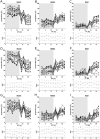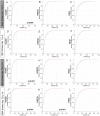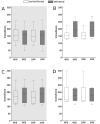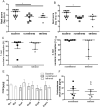The impact of tethered recording techniques on activity and sleep patterns in rats
- PMID: 35210444
- PMCID: PMC8873297
- DOI: 10.1038/s41598-022-06307-3
The impact of tethered recording techniques on activity and sleep patterns in rats
Abstract
Electrophysiological recordings in animals constitute frequently applied techniques to study neuronal function. In this context, several authors described tethered recordings as a semi-restraint situation with negative implications for animal welfare and suggested radiotelemetric setups as a refinement measure. Thus, we here investigated the hypothesis that tethered recordings exert measurable effects on behavioral and sleep patterns in Sprague-Dawley rats. Animals were kept in monitoring glass cages either with or without a head connection to a recording cable. Saccharin preference, nest building, serum corticosterone and fecal corticosterone metabolite levels were in a comparable range in both groups. The proportion of vigilance states was not affected by the cable connection. Minor group differences were detected in bout lengths distributions, with a trend for longer NREM and WAKE stages in animals with a cable connection. However, a relevant effect was not further confirmed by an analysis of the number of sleep/wake and wake/sleep transitions. The analysis of activity levels did not reveal group differences. However, prolonged exposure to the tethered condition resulted in an intra-group increase of activity. In conclusion, the comparison between freely moving vs tethered rats did not reveal major group differences. Our findings indicate that telemetric recordings only offer small advantages vs cabled set ups, though this may differ in other experimental studies where for example anxiety- or drug-induced effects are analyzed.
© 2022. The Author(s).
Conflict of interest statement
The authors declare no competing interests.
Figures








References
-
- Russell WMS, Burch RL. The Principles of Humane Experimental Technique. Methuen; 1959.
Publication types
MeSH terms
LinkOut - more resources
Full Text Sources

